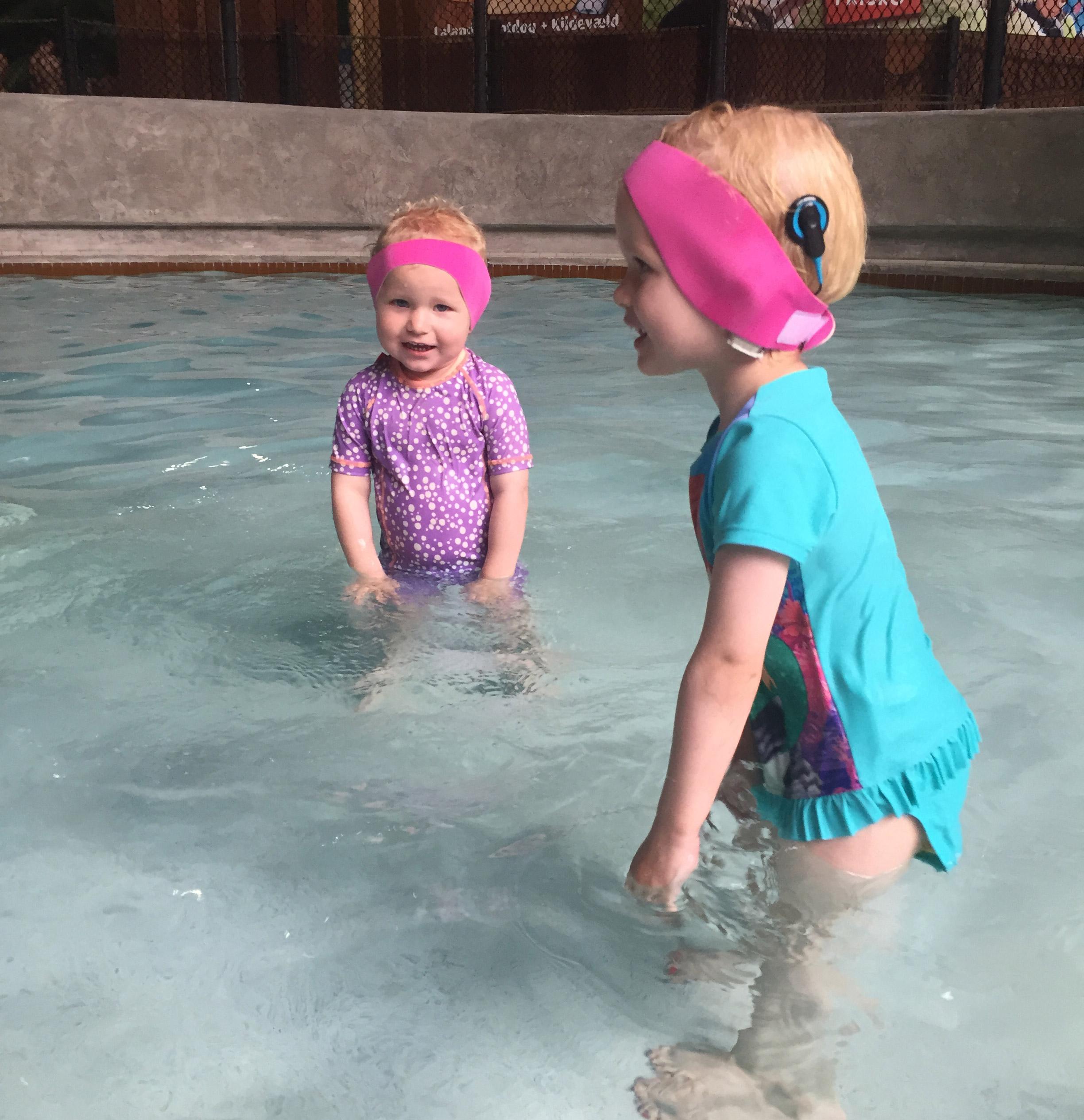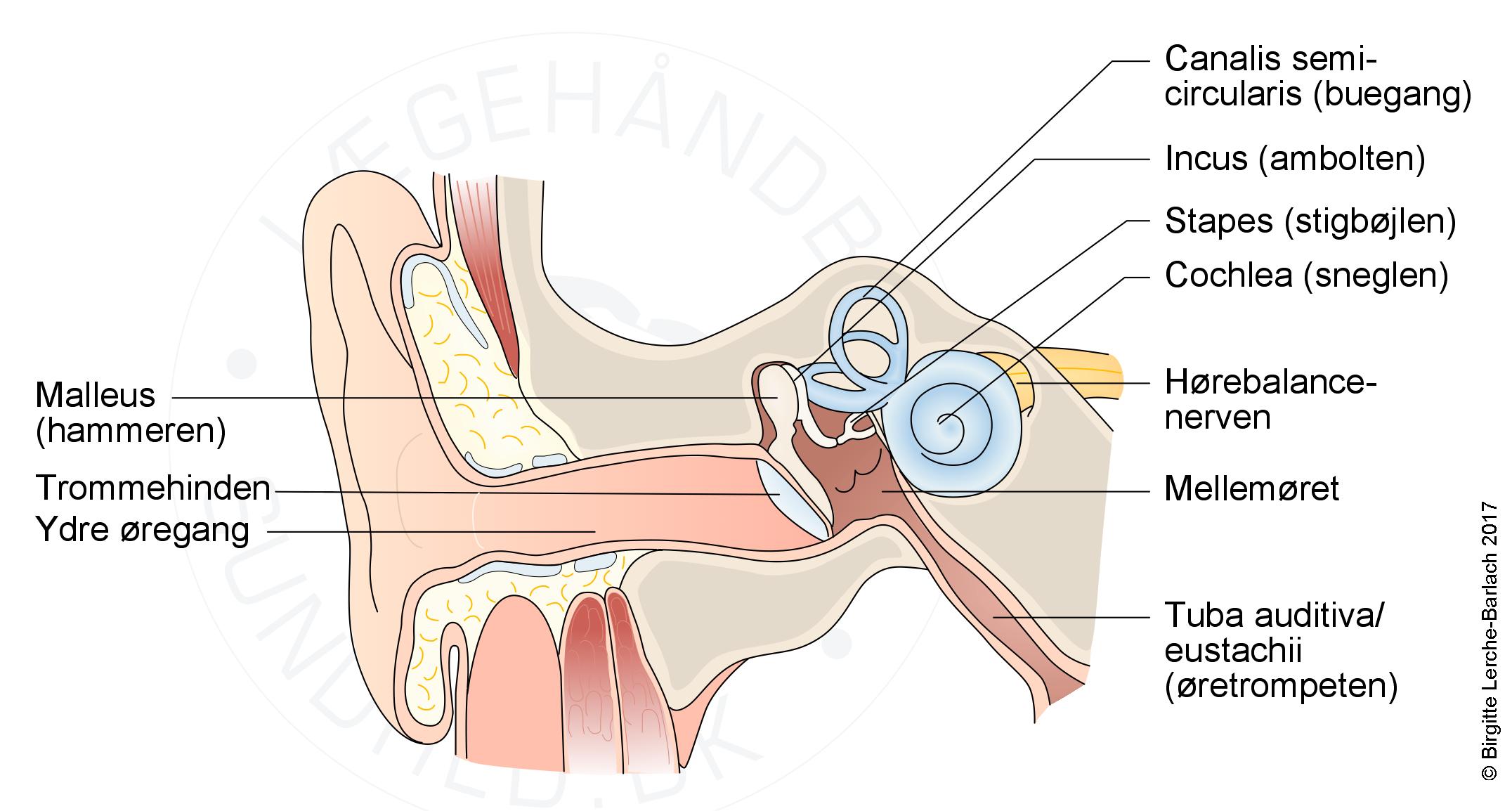At a certain time of year, it almost seems as if every child has a middle ear infection and the otologist is fully booked – “damn it”, you think to yourself…
You probably already know the signs:
- The child has difficulty sleeping and wakes up several times during the night
- You get up at least a thousand times every night to calm a inconsolable child
- The child is irritable and un-focused and pulls away to be alone
- The child’s hearing is affected and pronounciation of words is worsened
- The child becomes hyperactive and looses concentration and natural curiosity
- The child does not take notice of sounds outside the field of vision
- The child may have balance problems
- The child has a temperature, lack of appetite, discharge from the ears and is maybe recovering from a cold
I have seen many parents, that worry about their child having yet an ear infection and can see no other solution than the child to have ear tubes inserted, to relieve the fluid. But is this procedure realy necessary? And why can’t the child be in day care, when they have a middle ear infection?
We have been through numerous middle ear infections, and along the way I have gathered some “true” or “false” information:
1. Remember always to wear a hat to avoid ear infections
False
A wolly hat is brilliant for keeping little ears warm and for preventing sore ears in a cold wind. It can however not prevent an ear infection. Make sure to keep the child’s body and feet nice and warm (by using woolen clothes) to avoid them getting a cold, which is often the cause of an ear infection.
2. All ear infections should be treated with antibiotics
False
Most middle ear infections will go away without any medication. Most otologist will want to see the child for a check-up after 1-3 months.
The best treatment is simple pain relief every six hours.
The otologist will examine the child and determine which corse of treatment is necessary, depending on the severity of the infection.
Un less, it is a child with Cochlear Implants as our daughter, Ella. In these cases, a middle ear infection is taken very seriously, as it can cause damage to the electrodes or in the worst case, meningitis. The reason is, that under CI surgery, the surgeon will make an open incision behind the ear and then open the mastoid bone leading to the middle ear space and after surgery, this area is still very vulnerable for infection. This is why we are always admitted to hospital, whenever there is an ear infection. The treatment here is intravenous antibiotics for 24 hours and supplementary treatment at home with ear drops and pain medication.
3. The child will outgrow frequent middle ear infections
True
Middle ear infections caused by a virus/cold or bacteria is one of the most common infections in small children. The infections occure most frequently in the child’s first year, about 25%. The frequency decreases to 15% during the child’s second year and 10% during the third year. (Source: Children and middle ear infections, Mikkel & Jesper Holmelund)
The Eustachian tube is a thin tube that runs from the middle ear to the back of the nose, and is smaller in children than in adults. The tube will build up mucus easier in children and will become swollen and blocked, if they catch a cold or are subjected to tobacco smoke.
As the child grows so will also the Eustachian tube, reducing or completely stopping the risk of developing an ear infection.
4. The child’s hearing is affected
True
When fluid is buildt up in the middle ear, it corresponds to having a hearing loss of 30-40 dB. Well, that doesn’t sound of much but then consider, that a perfectly normal conversation corresponds to about 60dB? What we will percieve a normal tone of voice, the child will percieve as a mere whisper.
The constant background noise in childrens’ daycare centers is another issue. A normal listening environment without any outcoming disturbances, will normally have a sound scale of about 35 dB. Imagine then a daycare center with all the daily noise – a child with a hearing impairment will easily miss sounds as s, t, f and v.
The first three years are absolutely vital for a child’s vocabulary development and just as important is the child’s access to sound and hearing. This is the reason why children as young as 6 months old are treated with ear tubes following multiple ear infections. The older the child, the less risk of loosing any vocabulary skills and language development.
So even if a middle ear infection is a passing occurance, I find it so important that we take meassures to minimise background noise at home and in daycare.
Here are some examples (that we follow every day):
- Avoid unecessary background noise at home – dish washer or washing maschine should only be running while the child is sleeping or out of the house
- Music and tv should be avoided and only used with active participation
- Sit close to the child when you are having a conversation/reading a book and make eye contact
- Give the child permission to fully relax – the extra concentration will make the child more tired
- Speak clearly and do not cover your mouth
- Speak one at a time and don’t walk around when you are talking to the child
5. Ear tubes will damage the eardrum
Partially true
Inserting ear tubes is a minor procedure, performed by the otologist and brings instant relief. The doctor will make a tiny incision in the eardrum through the outer ear canal. There will be no stitches – maybe a bit of scar tissue, but this is of no significance for the child.
When the eardrum registers a sound, it will start vibrating and start a chain reaction that enables us to hear. If a child has many ear tube procedures, the eardrum will eventually thicken with scar tissue, making it difficult to vibrate properly and reduce hearing.
Animation of ear tube procedure
6. Children with ear tubes should avoid swimming pools
False
A child with ear tubes can have just as much fun in the pool as any other child. However, diving in the warm water of i.e. a spa should be avoided, due to the bacteria in the water.
A good advice is to use headbands or water-repelling cotton wool, to prevent water from entering the outer ear canal.

7. Alternative medicin is effective against ear infections
False
There is no scientific evidence that alternativ medicin can prevent or heal middle ear infections.
8. Avoid sending the child to day care with an ear infection
Partially true
Many day care centers have a policy of not allowing children to attend, while they have an ear infection. This is not because of the ear infection itself, but rather that the child might be generally under the weather and will need extra care and attention from the staff.
Middle ear infections are caused by colds and bacterias. Siblings are the most common carriers of disease and colds and the day care center also presents high risks, as many children are together and share their toys. The level of contagion increases with the number of children per square metres. Passive smoking also seems to increase the risk, because of the irritation of the child’s mucouse membranes. Furthermore, it is adviced that all children are breastfeed until they are at least 4 months old, as bottle and pacifier present a higher risk of infection. Using a pacifier for sleep only, reduces the risk of middle ear infections by 30%.
The best (and probably the most unrealistic) ways to avoid middle ear infections
- Only child
- Breastfeed for at least 4 months
- Cared for at home with no sharing of toys and pacifiers
- No use of pacifiers
- Non-smoking parents
- High level of general hygiene with shared pacifiers and toys
On YouTube, there are several videos describing the technical term: “Otitis media” – they show how an normal eardrum looks like, compared to an infected one and how ear tubes are inserted. There are many very instructive videos for the non-sensitive viewer.
Professionals classify ear infections as OME or AOM. Both are terms for pressure changes in the middle ear
OME is mucous and fluid in the middle ear with no signs of infection
AOM is a bacterial infection in the middle ear
Sources:
https://blausen.com/da/video/dr%C3%A6n-i-%C3%B8ret/
Børn og ører, inflammatoriske mellemøretilstande af Mikkel Holdelund & Jesper holmelund, LEO temabog.


Leave a Reply